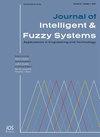利用 OpenCV 对传统格式财务报告进行文本提取的框架
IF 1
4区 计算机科学
Q3 COMPUTER SCIENCE, ARTIFICIAL INTELLIGENCE
引用次数: 0
摘要
由于监管机构加强了资产负债表外的信息披露,财务报告现在包含了大量财务报表以外的信息。因此,财务报告脚注的长度超过了财务报表的长度。这对监管机构和财务报告用户有效管理这些信息提出了新的挑战。财务报告结构清晰,包含大量适用于信息提取、自动汇总和信息检索的结构化信息。从财务报告中提取标题和段落内容可以获取年度报告文本的框架。本文以提取年报文本的结构框架为重点,介绍了一种基于 OpenCV 的计算机视觉文本框架提取方法。该方法采用形态学图像扩张技术来区分标题和正文。此外,本文还将提出的方法与传统的基于规则的提取方法相结合,后者利用了标题开头数字和符号的特征。这种结合产生了一种优化的框架提取方法,产生了一种更简洁的文本框架。本文章由计算机程序翻译,如有差异,请以英文原文为准。
A text extraction framework of financial report in traditional format with OpenCV
Due to intensified off-balance sheet disclosure by regulatory authorities, financial reports now contain a substantial amount of information beyond the financial statements. Consequently, the length of footnotes in financial reports exceeds that of the financial statements. This poses a novel challenge for regulators and users of financial reports in efficiently managing this information. Financial reports, with their clear structure, encompass abundant structured information applicable to information extraction, automatic summarization, and information retrieval. Extracting headings and paragraph content from financial reports enables the acquisition of the annual report text’s framework. This paper focuses on extracting the structural framework of annual report texts and introduces an OpenCV-based method for text framework extraction using computer vision. The proposed method employs morphological image dilation to distinguish headings from the main body of the text. Moreover, this paper combines the proposed method with a traditional, rule-based extraction method that exploits the characteristic features of numbers and symbols at the beginning of headings. This combination results in an optimized framework extraction method, producing a more concise text framework.
求助全文
通过发布文献求助,成功后即可免费获取论文全文。
去求助
来源期刊

Journal of Intelligent & Fuzzy Systems
工程技术-计算机:人工智能
CiteScore
3.40
自引率
10.00%
发文量
965
审稿时长
5.1 months
期刊介绍:
The purpose of the Journal of Intelligent & Fuzzy Systems: Applications in Engineering and Technology is to foster advancements of knowledge and help disseminate results concerning recent applications and case studies in the areas of fuzzy logic, intelligent systems, and web-based applications among working professionals and professionals in education and research, covering a broad cross-section of technical disciplines.
 求助内容:
求助内容: 应助结果提醒方式:
应助结果提醒方式:


